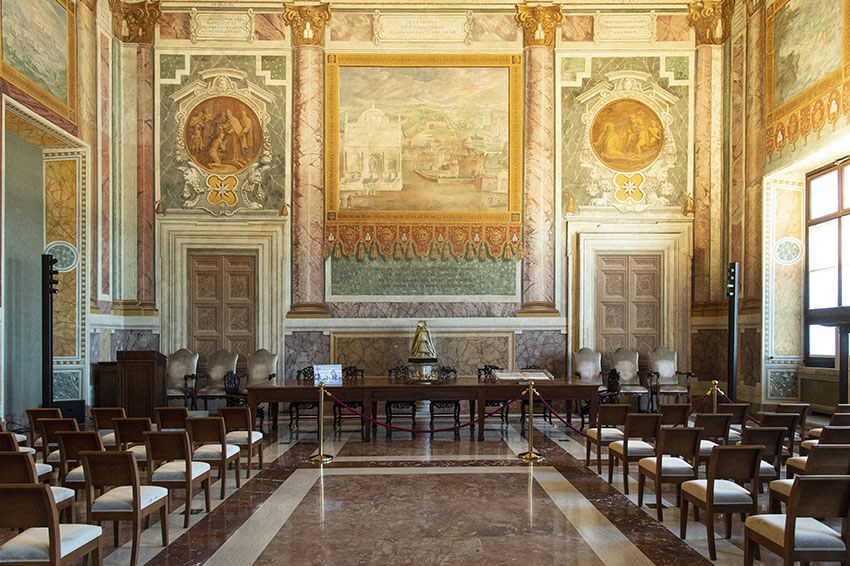On the first floor of the Lateran Palace, in addition to ten reception rooms, each with its own specific function, there is also access to the Holy Father's flats and private chapel. Pope Francis wanted this fundamental place for the bishops of Rome to reopen to the public in 2021.
The Sala della Conciliazione or Hall of the Pontiffs hosted the stipulation of the Lateran Pacts on 11 February 1929, between the Holy See and the Kingdom of Italy represented respectively by Cardinal Pietro Gasparri (Pius IX's Secretary of State) and Benito Mussolini, at that time head of the Italian government and Secretary of State. The eight oriental carved mahogany chairs and the large table at the back of the room are the same ones used at the signing of the Concordat, as is the gilded bronze writing set made in Rome by Ignazio Borgognoni in 1850.
The decoration of the hall recalls the dual nature of the Church as a human and divine institution, guided by Peter and his successors. Along the large gilded upper frieze there are frescoes of twenty-three pontiffs from Saint Peter to Silvester I, the reigning pope at the time of Emperor Constantine. In the lower band, on the other hand, are frescoes of the works carried out by Pope Sixtus V during his five years of pontificate, between 1585 and 1590. It was this Pope, called “Er Papa tosto”, the tough pope, by the Romans, who raised the state finances and condition of the city of Rome through a series of feats, some of which are frescoed here: The rebuilding of Piazza del Quirinale and Porta Pia in the Aurelian Walls and the Acqua Felice aqueduct. The new fortifications of Montalto in the Marches. The fight against banditry. The construction of the Basilica of Loreto. The reclamation of the Pontine Marshes and the Port of Terracina. The treasure of Castel Sant'Angelo and the construction of the Sistine Hall in the Vatican Library. The stipulation of alliances with Christian princes and the restoration of the Port of Civitavecchia and the ancient aqueduct of Trajan. The wooden ceiling is the work of Cesare Santarelli (1589) and features the heraldic motifs of Pope Sixtus V with his coat of arms: the lion with a pear branch.





